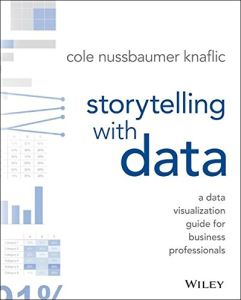Join getAbstract to access the summary!

Join getAbstract to access the summary!
Cole Nussbaumer Knaflic
Storytelling with Data
A Data Visualization Guide for Business Professionals
Wiley, 2015
What's inside?
Learn how to present your data with a simple visual story that appeals to your audience.
Recommendation
Author Cole Nussbaumer Knaflic, who travels the world teaching companies how to produce better presentations, has streamlined the process of developing effective presentations. Each of her chapters provides a simple lesson that will transform how you offer data to your audiences. To explain why each step works, she refers to her extensive experience, to psychology, and to vision and brain science. Knaflic includes a chapter on model visuals and case studies to highlight how to use her lessons to produce stronger presentations. With appreciation for her specificity, getAbstract recommends her strategies to consultants, small business owners, marketing personnel, and anyone who needs to seize and hold an audience’s sustained attention.
Summary
About the Author
Cole Nussbaumer Knaflic offers workshops and presentations internationally for data-driven organizations. She developed her unique data presentation talents through analytical roles in banking and private equity and recently as a Google People Analytics team manager.


















Comment on this summary